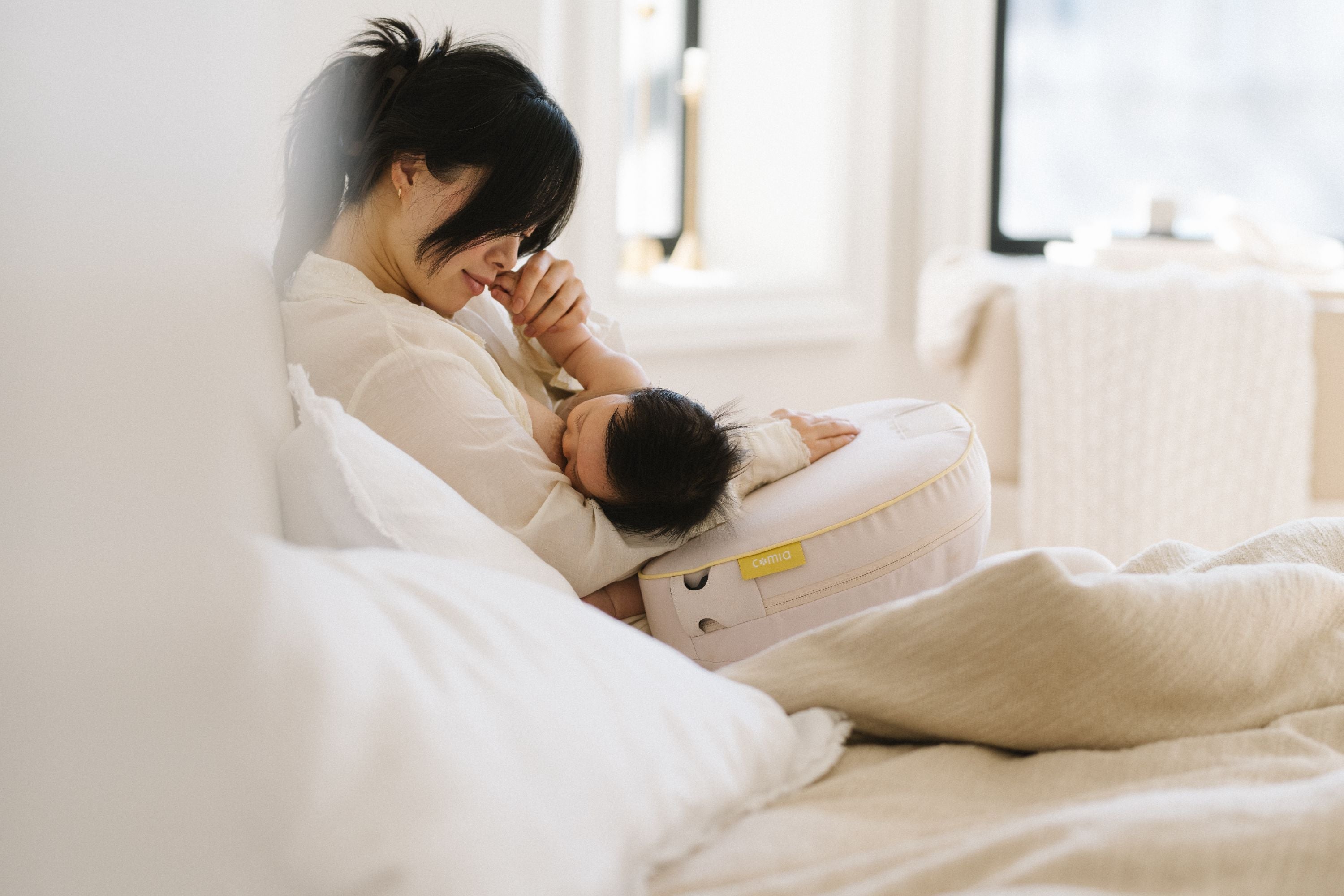
Which Breastfeeding Position Do You Like Best?
|
Different Breastfeeding Positions Every Parent Should Know
Finding the right breastfeeding position can make a world of difference for both you and your baby. Comfort, latch, and body support all play a role - and the right pillow or lack of one can be just as important as the position itself.
Let’s walk through the most common breastfeeding positions, along with which types of support work best for each.
1. The Cradle Hold
In the cradle hold, your baby’s head rests in the crook of your arm, with their body stretched across your front.
-
Best support: A light nursing pillow or cushion under your arm can help, but many parents find this position manageable without extra support once their baby gets bigger. A soft pillow behind your lower back or under your elbow can also prevent slouching.
-
Why it works: Natural and intuitive, especially once your baby has stronger neck control.
2. The Cross-Cradle Hold
The cross-cradle hold uses the opposite arm to support your baby’s head and guide them to your breast. It gives you more control and is especially useful for newborns still learning to latch.
-
Best support: This is where the Comia smart nursing pillow shines. Because Comia brings your baby up to breast level at the optimal height, you don’t have to hunch forward or hold baby’s weight the whole time. That extra support relieves strain on your arms, shoulders, and back while giving you better control of baby’s head.
-
Why it works: Great for helping your baby learn to latch, while keeping you comfortable and upright.
3. The Football Hold (Clutch Hold)
In the football hold, your baby is tucked under your arm like a football, with their body along your side and head at your breast.
-
Best support: The Comia smart nursing pillow was practically built for this position. Its design holds your baby at just the right height, so you don’t have to lift or strain. This frees your arms to focus on guiding the latch and keeps pressure off your belly — a huge help if you’ve had a C-section.
-
Why it works: Ideal for C-section recovery, parents with twins, or babies who need a more upright angle.
4. Side-Lying Position
In this position, you and your baby lie on your sides facing each other, tummy to tummy. It’s a restful way to feed, especially at night.
-
Best support: No pillow needed for your baby here — gravity and your body do the work. A regular body pillow or rolled towel behind your back can make you more comfortable, but your arms stay free.
-
Why it works: Lets you rest during feedings and keeps baby close without extra props.
5. Upright / Koala Hold
In the upright or “koala” hold, your baby sits straddled on your lap and nurses while facing you.
-
Best support: Since baby is vertical, most parents don’t need a nursing pillow here. Instead, good back support for yourself (like a chair with armrests or a cushion behind your lower back) makes the biggest difference.
-
Why it works: Great for older babies or infants with reflux, since it keeps them upright.
Final Thoughts
Breastfeeding isn’t one-size-fits-all. Each position has its perks, and the support you use can make or break the experience.
-
For positions like cradle and upright holds, you might be fine with minimal or no extra support.
-
For cross-cradle and football holds, the Comia smart nursing pillow makes feeding easier by lifting your baby to the perfect height, reducing strain on your arms and back, and helping you stay comfortably upright.
-
For side-lying, no bolster is needed — just you, your baby, and a comfortable spot to relax.
By pairing the right position with the right support, you’ll create a feeding routine that feels more natural, comfortable, and sustainable for both you and your little one.
